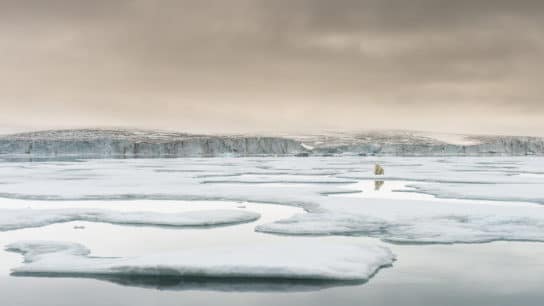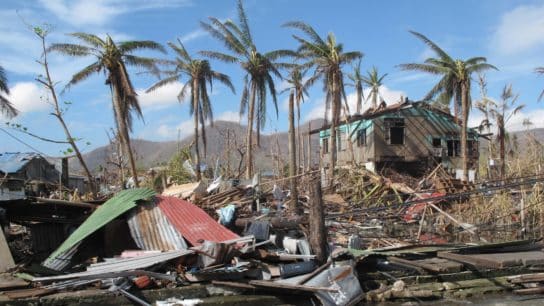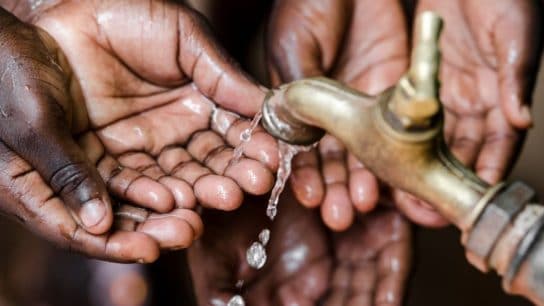Indigenous communities around the world perceive environmental change through more unique lenses than most of us. The peoples of the Arctic, such as the Yup’ik, hold a comprehensive knowledge of their surroundings that can teach us a lot about the current climatic changes and the ways in which the natural world responds to them.
—
Traditional Ecological Knowledge
Scientific findings educate us every day about the anthropogenic consequences of global warming. We see an increasing number of papers examining how the changes in the atmosphere affect the microclimates worldwide and how their habitats respond to rising temperatures and sea levels. However, these observations are often detached from day-to-day reflections as they consider science-based calculations.
Notably, our Western perception of dominance over the natural surroundings and the historical exploitation of resources limits our scope of perceiving and understanding the dynamics within the environmental sphere. For this reason, greater attention has been devoted to individual perceptions of environmental change, such as traditional ecological knowledge. This system represents generational knowledge of direct human contact with the natural world. It is developed within one community and passed down through generations as a unique way of interacting with one’s environment. In this system, a reciprocal relationship with the natural world is evident, in which harmony and respect are foundational for human-nature interactions. Contemporarily, we see a decline in traditional ecological knowledge as economic development and globalisation contribute to the gradual loss of Indigenous communities.
Nevertheless, an increasing number of scholars and organisations have come to value such unique perceptions of the environment as they provide a crucial source of information about the consequences of climate change.
The Intergovernmental Panel on Climate Change (IPCC) reports that traditional ecological knowledge can be used as an entry point for climate adaptation measures. This is because such systems provide a traditional way of adapting to the changing environmental conditions of the past. Besides climate adaptation, traditional ecological knowledge can also inform us about the impacts of climate change on the surrounding environments.
You might also like: The Role of Indigenous Knowledge in Climate Change Adaptation In Bangladesh and the Philippines
Yup’ik Peoples of the Arctic
The Indigenous communities of the Arctic, such as the Yup’ik (also spelled Yupik), are a widely dispersed group of peoples throughout Siberia, Alaska, St. Lawrence Island and Diomede Island.
These traditional communities emphasise respect for elderly people and their natural environments. In their worldview, animals and plants are seen as relatives rather than resources that should be exploited. Furthermore, the Yup’ik traditional ways of knowing encompass a particular attachment to the place where people have lived through generations. The traditional practices of dance, stories and rituals are closely connected to their place and the associated animals and plants. As such, Indigenous Yup’ik communities have a unique relationship with their natural world.
This system of knowledge has been passed down through generations and yields their comprehensive perception of the natural world in which plants and animals are seen as relatives or spirits. For this reason, these communities formed a ‘relationship’ with their natural surroundings, and ultimately developed a unique perception of natural events of which minimal deviations/changes are observable to community members. However, global warming and changing weather conditions impact the customary processes of their natural world. For this reason, climate change is a “much deeper and more personal” phenomenon for Indigenous communities such as Yup’ik . Within their unique perceptions of ecosystems, climate change impacts more than sea levels or temperatures – it influences the natural systems of plants and animals that now act differently as opposed to what has been passed down through generations.
Three Examples of the Yup’ik Perception of Climate Change
1. New birds and plants are appearing
As we know, climate change transforms our seasonal weather patterns. Some regions that never experienced harsh winters now see increased snowfall. Others must now cope with heatwaves that have never occurred in these places. This is also the case for the Arctic communities that see an increase in rainfall instead of regular snowing during the wintertime.
Apart from such seasonal and temperature changes, the Yup’ik also observed the differences in the appearance of bird species. As expressed by some of the Yup’ik peoples, Western Alaska now sees new birds that are blue and orange coloured, such as spruce grouse. They also notice rose hips that naturally need mild temperatures, usually in warmer climates. Some Yup’ik hunters mention the emergence of predators such as wolves and coyotes that “they never had before.” Such observations of changes by Yup’ik peoples connect their knowledge of local species and times of their appearance with global warming that steadily alters local ecosystems.
2. Whales’ migration patterns are changing
For the Yup’ik communities, the knowledge of whales’ behaviour is deeply embedded in their traditions and customs. Whales are crucial in their cosmologies, and their proper use and disposal have been passed down through generations. As such, Yup’ik developed a unique perception of whales’ migration patterns.
In their knowledge system, the bowhead whales have been noticeable around St. Lawrence Island in April and May in recent decades. However, this trend is recently changing, and the whales come to the area as early as March. The elders observe that this can be associated with the earlier “little kulusik,” which refers to the melting of the multilayer ice in the surrounding waters.
Global warming causes the ice caps in the Alaskan waters to melt earlier than before, impacting bowhead whales’ migration pattern. Therefore, the knowledge of the Yup’ik people enables us to see how animals such as whales adapt to climate change by altering their standard moving patterns across the North Pacific Ocean.
3. Lower water levels impact traditional hunting
The Yup’ik people of Southwest Alaska have noticed that the level of local lakes and rivers has decreased considerably in the past few years. For them, specific sites have been used for decades for traditional hunting. As such, generations of Yup’ik peoples have associated the sites near local rivers and lakes with the traditional hunting spots.
However, lower water levels have recently made it impossible for hunters to access many traditional tributaries. Yup’ik hunters connect the low water levels with the decreased precipitation rates in the region. According to the US Department of Agriculture (USDA) Climate Hubs, precipitation rates “have very slightly decreased” in Southern Alaska due to climate change. However, even such a marginal change in the weather conditions has been noticed by traditional hunters of the Yup’ik as they possess a unique perception of their environmental surroundings. As such, a modest variation in the light of Western statistical approaches turns out to have a significant ecological impact on the sites observed by the generations of Yup’ik hunters.
Conclusion
Anthropogenic climate change is a complex phenomenon that impacts our planet in various ways. Despite the rise in scientific research about global warming, we still need to learn more about how this human-induced event affects the microclimates and species around them worldwide.
We can know more about the impact of climate change on fauna and flora by focusing on Indigenous communities such as Yup’ik. Their unique perception of the environment and generational knowledge can help us understand how microclimates around the world adjust to rising temperatures and how the natural world reacts to such changes.
Our planet holds many environments that, in turn, yield each region to respond to climate change differently. As such, it is crucial to listen to Indigenous communities and value their environmental knowledge in the search for the consequences that anthropogenic climate change brings to our world.
Featured image: Flickr
You might also like: Indigenous People Are Essential for Preventing Biodiversity Loss. They Mustn’t Be Sidelined.














